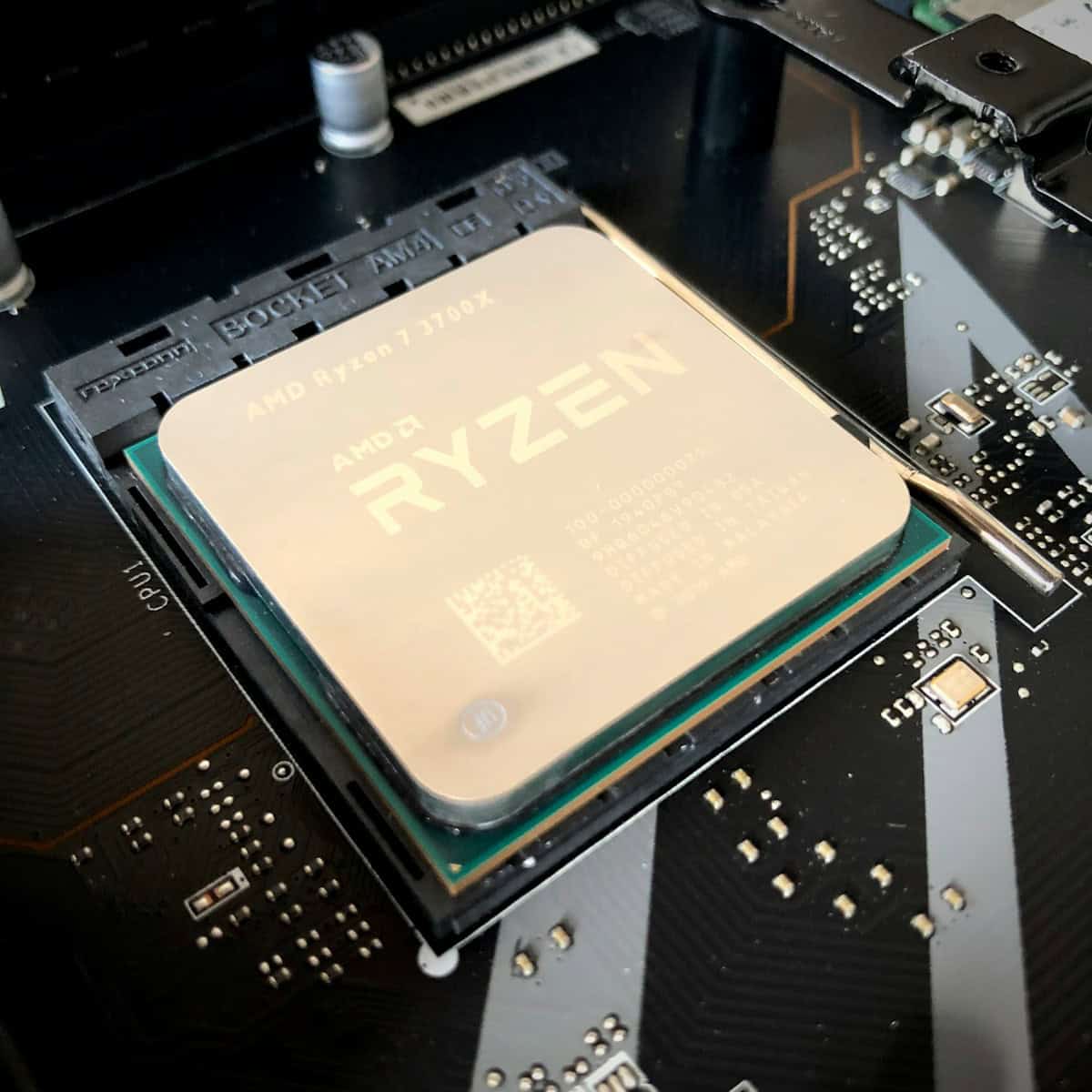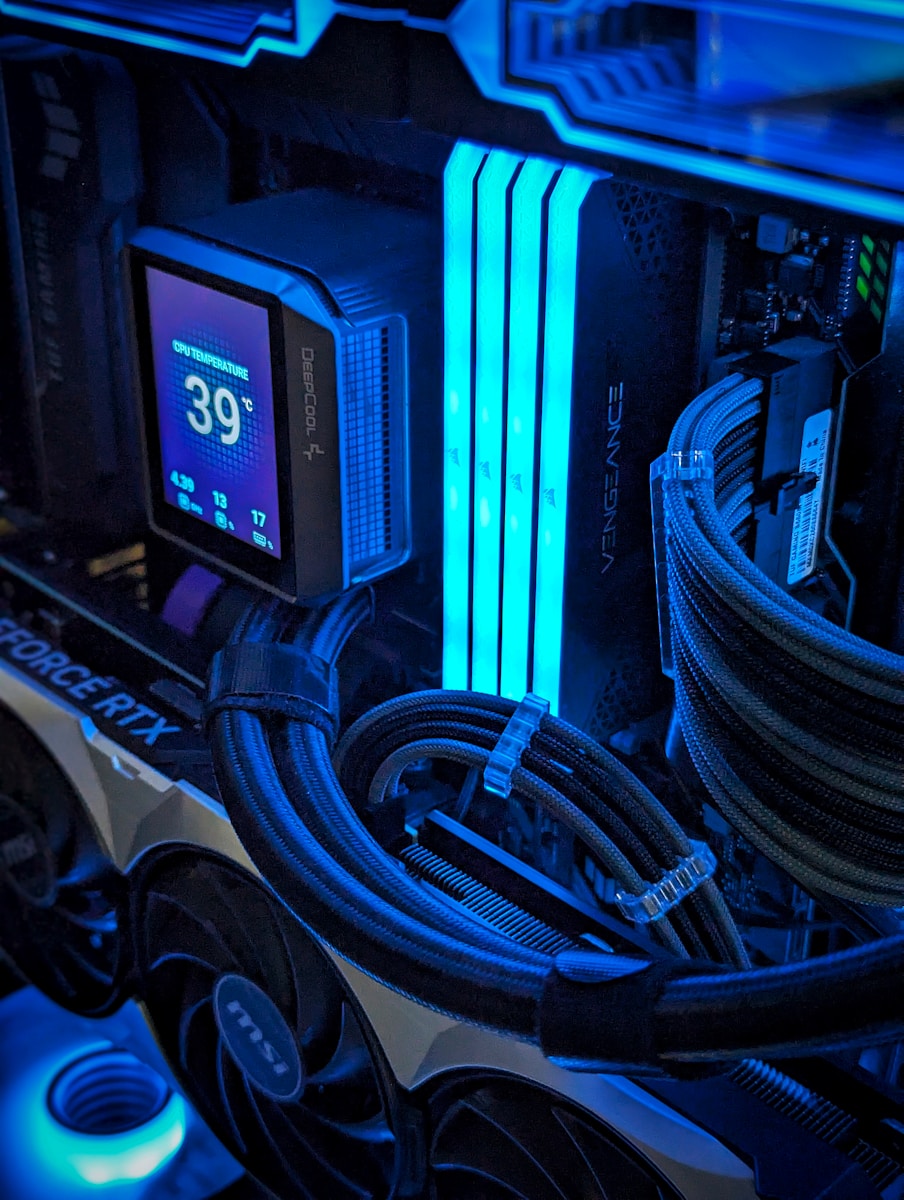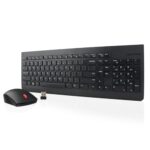Overclocking your CPU is a popular way to unlock extra performance, whether you’re gaming, editing videos, or simply pushing your hardware to its limits. However, before you dive in, it’s essential to understand the risks and responsibilities that come with it. Overclocking can deliver noticeable speed improvements, but it also increases heat output and power consumption, which can lead to system instability or even hardware damage if not managed properly.
Knowing how to safely start—or stop—overclocking is key. You’ll typically make these adjustments through your computer’s BIOS or UEFI settings. If you notice crashes, overheating, or erratic performance, returning your CPU to its default clock speed often restores stability and extends the life of your system. Before making any changes, you should first confirm whether your CPU is already overclocked by using Windows Task Manager or third-party monitoring tools. From there, a quick trip into the BIOS will let you fine-tune or disable overclocking settings as needed.
| Method | Difficulty | Time Required |
|---|---|---|
| BIOS Settings | Moderate | 5-10 minutes |
| Windows Settings | Easy | 2-5 minutes |
| Third-party Software | Easy | 5-15 minutes |

What Is CPU Overclocking?
CPU overclocking is the process of increasing your processor’s clock speed beyond the manufacturer’s default specification. This allows it to perform more operations per second, improving performance in CPU-intensive tasks.
However, higher speeds require more power and generate more heat—meaning overclocking needs to be carefully planned and managed.
What You Need Before You Start
1. Unlocked CPU
Only certain CPUs are designed for overclocking:
- Intel: Look for “K” or “KF” series (e.g., i5-13600K, i9-13900KF)
- AMD: Most Ryzen CPUs are unlocked by default
2. Compatible Motherboard
You’ll need a motherboard that supports overclocking:
- Intel: Z-series chipsets (e.g., Z690, Z790)
- AMD: B-series or X-series (e.g., B550, X670)
3. High-Quality CPU Cooler
Stock coolers won’t cut it for serious overclocking.
- Air Coolers: Noctua NH-D15, DeepCool AK620
- AIO Liquid Coolers: Corsair H100i, NZXT Kraken X63
4. Reliable Power Supply (PSU)
Overclocking draws more power. Make sure your PSU has:
- High efficiency (80+ Gold or better)
- Enough wattage headroom (don’t run close to max capacity)
5. Thermal Paste
Reapplying good thermal paste like Arctic MX-6 or Thermal Grizzly Kryonaut ensures better heat transfer.
6. Monitoring & Stress Testing Software
- Monitoring Tools: HWMonitor, CoreTemp, HWiNFO64
- Stress Tests: Prime95, Cinebench, AIDA64, OCCT
Know the Terminology
- Base Clock (BCLK): The reference frequency your CPU multiplies to achieve its final speed.
- Multiplier: The value your CPU multiplies by the BCLK to get total GHz (e.g., 100 MHz × 45 = 4.5 GHz).
- Voltage (Vcore): The voltage supplied to your CPU. Higher overclocks usually require higher voltage.
- Thermal Throttling: CPU slows down to prevent overheating.
- Load Line Calibration (LLC): Helps stabilize voltage under load.
Risks of Overclocking
Overclocking can offer great performance gains, but not without downsides:
- Increased Heat: Poor cooling can lead to overheating.
- Reduced Lifespan: Constant high voltage/heat can degrade silicon over time.
- System Instability: Pushing too far can result in crashes or failure to boot.
- Warranty Void: Overclocking may void your CPU or motherboard warranty.
How to Overclock – Basic Step-by-Step
- Enter BIOS/UEFI: Restart your PC and press DEL/F2 to access BIOS.
- Set CPU Multiplier: Increase it gradually (e.g., from 40x to 42x).
- Adjust Voltage (if needed): Slowly raise Vcore—start around 1.25V and monitor temps.
- Save and Boot into OS.
- Stress Test: Run Prime95 or Cinebench for stability.
- Monitor Temps: Keep under 85°C for long-term use.
- Repeat: Increase multiplier or fine-tune voltage for more performance.
Pro Tip: Use BIOS overclocking rather than software for better stability and control.
Signs of a Bad Overclock
- BSOD (Blue Screen of Death)
- Random reboots
- System won’t POST (boot up)
- Thermal throttling or high idle temps
- Failed stress tests
If any of these happen, reduce the multiplier or increase cooling and voltage carefully.
Ideal CPU Temps
| State | Ideal Temp Range |
|---|---|
| Idle | 30°C – 45°C |
| Gaming | 60°C – 80°C |
| Stress Test | 70°C – 90°C |
| Danger Zone | 90°C+ |
Extra Tips for a Safe Overclock
- Don’t go above 1.35V Vcore unless you’re experienced and have excellent cooling.
- Update your BIOS for better CPU support and stability improvements.
- Enable XMP (Extreme Memory Profile) for easy RAM overclocking.
- Benchmark Before & After to see if the overclock is worth it.
Is It Worth Overclocking in 2025?
Modern CPUs are already highly optimized, and gains from overclocking tend to be marginal (5–15% in real-world tasks). For gamers or creators trying to get every last frame or render time improvement, it’s still a fun and rewarding process—especially if you enjoy tweaking your hardware.
Understanding CPU Overclocking
CPU overclocking increases processor performance beyond factory settings. It involves adjusting clock speeds and voltages to boost processing power.
Fundamentals of Overclocking
Overclocking pushes a CPU to run faster than its default speed. This process typically involves changing BIOS settings to adjust the CPU ratio or multiplier. You’ll also need to increase voltage to support higher clock speeds.
Key components in overclocking:
- Base clock (BCLK)
- CPU multiplier
- Core voltage
To overclock, you gradually increase these values while monitoring temperatures and stability. Start with small increments and test thoroughly after each change.
Turbo Boost and Precision Boost are auto-overclocking features on modern CPUs. They temporarily increase clock speeds under heavy loads.
Risks and Benefits
| Benefits | Risks |
|---|---|
| Improved performance | Increased heat output |
| Better value | Potential system instability |
| Enhanced gaming experience | Reduced lifespan of components |
Overclocking can significantly boost CPU performance, especially in CPU-intensive tasks like gaming or video editing. You might see up to 20% improvement in some cases.
However, overclocking increases heat output and power consumption. This can lead to system instability if not properly managed. You’ll need adequate cooling solutions to prevent thermal throttling or damage.
Pushing voltages too high may shorten your CPU’s lifespan. It can also void warranties, so proceed with caution.
XMP (Extreme Memory Profile) is a form of RAM overclocking. It’s generally safer than CPU overclocking but still carries some risks.
Accessing BIOS/UEFI Settings
To stop CPU overclocking, you’ll need to enter your computer’s BIOS or UEFI settings. These settings control fundamental aspects of your system’s hardware.
Navigating to BIOS/UEFI Interface
To access BIOS/UEFI settings, restart your computer. As it boots up, press the designated key repeatedly. This key varies by manufacturer but is often:
- Del
- F2
- F10
- Esc
The correct key usually appears on the boot screen. If you miss it, restart and try again. Some computers have a special button to access BIOS directly.
Newer systems with UEFI might require you to:
- Open Windows Settings
- Go to Update & Security
- Select Recovery
- Click “Restart now” under Advanced startup
Identifying Overclocking Options
Once in BIOS/UEFI, look for overclocking settings. They’re typically found under:
- Advanced
- Performance
- OC (Overclocking)
Use arrow keys to navigate. The exact location varies by motherboard model.
Common overclocking options include:
| Option | Description |
|---|---|
| CPU Ratio | Controls CPU multiplier |
| CPU Voltage | Adjusts CPU power |
| XMP Profile | Memory overclocking |
To disable overclocking, set these values to “Auto” or their default states. Look for a “Load Optimized Defaults” option to reset all settings quickly.
After making changes, save and exit BIOS. Your system will reboot with the new settings applied.
Reverting to Default CPU Settings
Returning your CPU to its default settings can improve system stability and longevity. This process involves disabling overclocking features and optimizing your system for reliable performance.
Disabling Overclocking Features
To disable CPU overclocking, you’ll need to access your computer’s BIOS or UEFI. Restart your PC and press the appropriate key (often F2, F10, DEL, or ESC) when the manufacturer’s logo appears.
Navigate to the overclocking or performance settings. Look for options like:
- CPU Ratio
- CPU Multiplier
- CPU Voltage
- XMP Profiles
Set these values back to their default or “Auto” settings. If you’re unsure about specific values, look for a “Reset to Default” or “Load Optimized Defaults” option.
After applying changes, exit the BIOS and save your settings. Your CPU will now run at its stock speed.
Optimizing for Stability and Longevity
Once you’ve reverted to default settings, focus on optimizing your system for stability. Here are key steps:
Update BIOS: Check your motherboard manufacturer’s website for the latest BIOS version.
Install latest drivers: Update chipset and other hardware drivers.
Monitor temperatures: Use software like Core Temp to ensure your CPU stays cool.
Clean your PC: Remove dust to improve airflow and cooling.
Adjust power settings: In Windows, choose a balanced power plan for optimal performance and efficiency.
| Setting | Recommended Value |
|---|---|
| CPU Fan Speed | Auto |
| Power Limit | Default |
| Voltage | Auto |
These steps will help maintain your CPU’s performance and extend its lifespan without the risks associated with overclocking.
Monitoring and Testing for Stability
Proper monitoring and testing are crucial for maintaining system stability after disabling CPU overclocking. These steps help ensure optimal performance without risking hardware damage.
Utilization of Diagnostic Software
Stress-testing software is essential for evaluating CPU stability. Programs like Prime95 and OCCT can push your processor to its limits. These tools help identify potential issues that may arise under heavy loads.
Run stress tests for at least an hour to check for stability. Monitor CPU temperatures during this process. If temperatures exceed 80°C, consider improving your cooling solution.
Use benchmarking tools to compare performance before and after disabling overclocking. This helps you understand the impact on your system’s capabilities.
| Software | Purpose | Duration |
|---|---|---|
| Prime95 | Stress test | 1-2 hours |
| OCCT | Stability check | 1 hour |
| CPU-Z | Performance monitoring | Continuous |
Adjusting Power and Performance Settings
Fine-tuning power settings can help maintain stability while optimizing performance. Access Windows Power Options to adjust these settings.
Set the minimum and maximum processor state to 99%. This prevents automatic overclocking while retaining most of your CPU’s performance.
Consider using balanced power plans instead of high-performance options. This can reduce heat generation and improve system longevity.
Monitor CPU frequencies using tools like CPU-Z. Ensure they don’t exceed the base clock speed after disabling overclocking.
Regularly check system temperatures during normal use. This helps you catch any unexpected spikes that could indicate lingering stability issues.
Frequently Asked Questions
Disabling CPU overclocking involves adjusting settings in BIOS and Windows. The process varies slightly for different hardware configurations and laptop models.
How can I revert my CPU to default clock speeds in Windows 11?
To revert your CPU to default speeds in Windows 11, access the BIOS settings during startup. Look for options labeled “CPU Frequency” or “CPU Ratio” and set them to “Auto” or their default values.
After exiting BIOS, verify the changes in Windows. Open Task Manager and check the CPU speed on the Performance tab.
What are the steps to disable GPU overclocking?
Disabling GPU overclocking differs from CPU overclocking. Use your GPU manufacturer’s software to reset clock speeds. For NVIDIA, use NVIDIA Control Panel. For AMD, use AMD Radeon Software.
Open the software and look for overclocking or performance settings. Set the GPU and memory clocks to their default values.
Where in the BIOS settings can I disable CPU overclocking?
CPU overclocking settings are typically found under “Advanced,” “Performance,” or “OC” tabs in BIOS. The exact location varies by motherboard manufacturer.
Look for options like “CPU Ratio,” “CPU Multiplier,” or “CPU Frequency.” Set these to “Auto” or their stock values.
What should I do if my CPU is automatically overclocking?
If your CPU is auto-overclocking, it may be due to built-in boost technologies. To disable this:
- Enter BIOS settings
- Find options like “Intel Turbo Boost” or “AMD Precision Boost”
- Disable these features
You can also adjust power settings in Windows to limit auto-overclocking.
How do I check if my CPU is currently overclocked?
To check if your CPU is overclocked:
- Open Task Manager (Ctrl + Shift + Esc)
- Go to the Performance tab
- Select CPU
Compare the listed speed with your CPU’s base clock speed. If it’s higher, your CPU may be overclocked.
You can also use third-party tools like CPU-Z for more detailed information.
How can I stop overclocking my CPU on a laptop?
Stopping CPU overclocking on a laptop is similar to desktop PCs, but with some limitations:
- Enter BIOS during startup
- Look for performance or power settings
- Disable any overclocking options
Some laptops may not allow BIOS-level changes. In this case, use Windows power settings to limit CPU performance.
| Method | Difficulty | Effectiveness |
|---|---|---|
| BIOS settings | Medium | High |
| Windows power settings | Low | Medium |
| Manufacturer software | Low | High |







